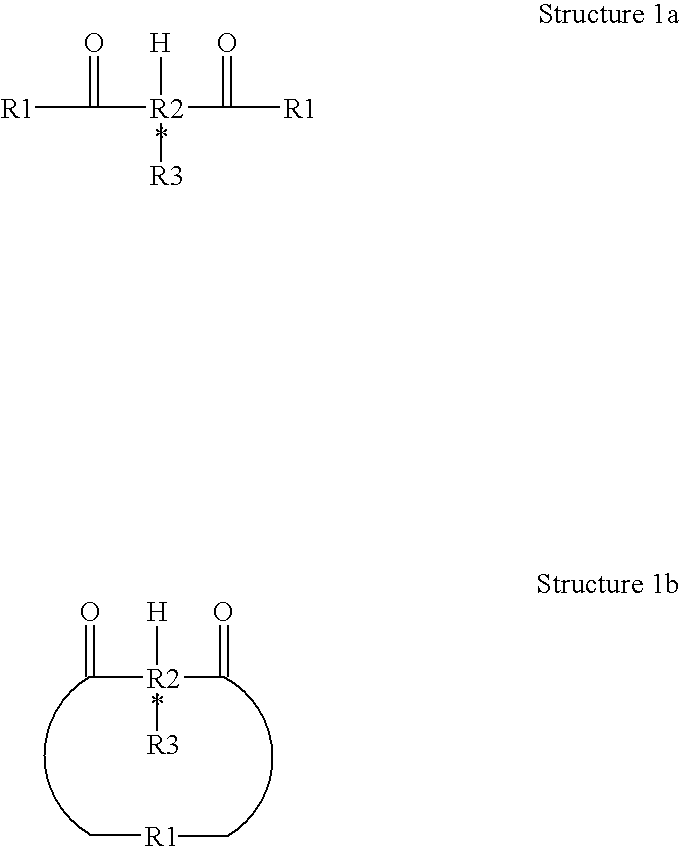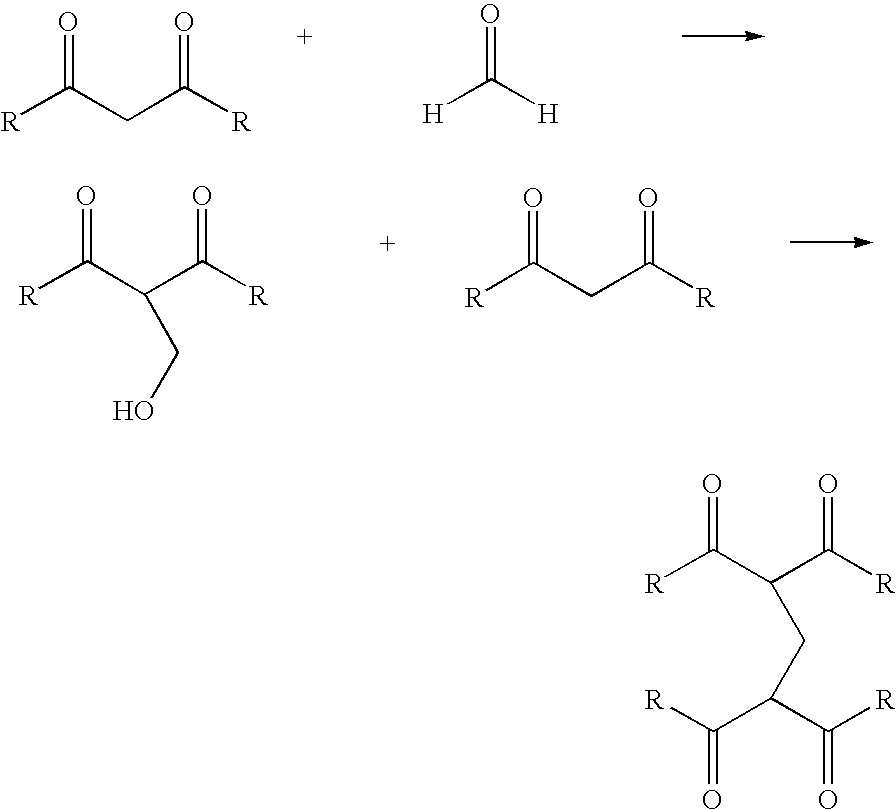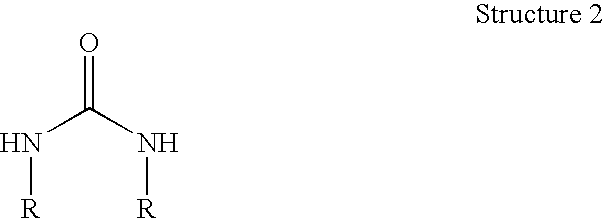Encapsulated active material with reduced formaldehyde potential
a technology of active materials and formaldehyde, applied in the field of active materials, can solve the problems of ineffective reduction of future levels of formaldehyde, unpleasant odor, strong aqueous solution of formaldehyde, etc., and achieve the effect of reducing the level of formaldehyd
- Summary
- Abstract
- Description
- Claims
- Application Information
AI Technical Summary
Benefits of technology
Problems solved by technology
Method used
Image
Examples
examples
[0143] The following fragrance composition was prepared for the Examples:
C log10PMolecularParts ByFragrance ComponentvalueWeightWeightVeramoss3.22196.073.0geranyl anthranilate4.22273.387.5α-irone3.82206.336.3Phenyl ethyl benzoate4.21226.283.2d-limonene4.23136.243.2Cis-p-t-butylcyclohexyl acetate4.02198.315.8Liverscone2.95152.127.3hexyl cinnamic aldehyde4.90216.3312.6hexyl salicylate4.91222.2910.6
example i
Formaldehyde Levels of Unscavenged Capsules
[0144] A reactor is charged with 34 g of an acrylic acid-acrylamide copolymer solution, 18 g of a melamine-formaldehyde precondensate, and 293 g of water. This mixture is stirred until a clear solution with an approximate pH of 6.3 is obtained. Acetic acid is added until pH 5 is reached. This mixture is then stirred for 1 hour at 23° C. at which time 210 g of the fragrance core consisting of 105 g of fragrance accord and 105 g of Neobee M-5 oil is added and the mixture high-sheared until a mean droplet size of 8 μm is reached. The temperature is raised to 80° C. for 2 hours to cure the microcapsules. After 2 hours 40 g of water are added and the mixture is cooled. Upon cooling a white slurry with pH 5-6 is obtained. ASTM formaldehyde anaylsis indicates formaldehyde levels in the slurry to be 1500-2000 ppm.
example ii
Post-Curing Formaldehyde Scavenging with Amide-Type Scavenger
[0145] After curing and while hot, 25 g of solid ethylene urea and 15 g of water are added to a 560 g batch of fragrance microcapsules, and the mixture cooled. Upon cooling a white slurry with pH 5-6 is obtained. ASTM formaldehyde analysis indicates formaldehyde levels in the slurry to be 50 ppm.
PUM
 Login to View More
Login to View More Abstract
Description
Claims
Application Information
 Login to View More
Login to View More - R&D
- Intellectual Property
- Life Sciences
- Materials
- Tech Scout
- Unparalleled Data Quality
- Higher Quality Content
- 60% Fewer Hallucinations
Browse by: Latest US Patents, China's latest patents, Technical Efficacy Thesaurus, Application Domain, Technology Topic, Popular Technical Reports.
© 2025 PatSnap. All rights reserved.Legal|Privacy policy|Modern Slavery Act Transparency Statement|Sitemap|About US| Contact US: help@patsnap.com



